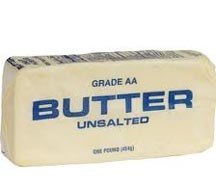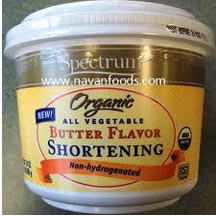Cookie Baking Secrets from the Pros
By Alice Osborne
 You don't have to go to culinary school to know what the pros know. Here, for your baking delight, are some of their well-kept cookie-baking secrets, revealed. And I suggest we include these in a chapter titled "Cooking and Baking Tips" in our Cook'n Recipe Organizer software so we don't loose them - the 'ol memory can fail us!
You don't have to go to culinary school to know what the pros know. Here, for your baking delight, are some of their well-kept cookie-baking secrets, revealed. And I suggest we include these in a chapter titled "Cooking and Baking Tips" in our Cook'n Recipe Organizer software so we don't loose them - the 'ol memory can fail us!
 EGGS: Try to use fresh eggs, so check the "Use-By" date on your egg carton as well as the Sell Date of Eggs date (Sell Date of Eggs - Date Codes on Egg Cartons). When baking, eggs should be at room temperature. Also the emulsion can be ruined if eggs or other liquids are too cold or too hot when they are added.
EGGS: Try to use fresh eggs, so check the "Use-By" date on your egg carton as well as the Sell Date of Eggs date (Sell Date of Eggs - Date Codes on Egg Cartons). When baking, eggs should be at room temperature. Also the emulsion can be ruined if eggs or other liquids are too cold or too hot when they are added.
 FLOUR: Don't substitute flour types. If your recipe calls for all-purpose flour, that's what you need to use. Cake flour and bread flour will not behave the same. When a recipe calls for all-purpose flour, it means the bleached variety.
FLOUR: Don't substitute flour types. If your recipe calls for all-purpose flour, that's what you need to use. Cake flour and bread flour will not behave the same. When a recipe calls for all-purpose flour, it means the bleached variety.
 NUTS: Smell and taste them before using. Oils in nuts can turn rancid quickly. Store any leftover nuts in the freezer for longest shelf life.
NUTS: Smell and taste them before using. Oils in nuts can turn rancid quickly. Store any leftover nuts in the freezer for longest shelf life.
 BUTTER: Make sure your butter is at room temperature, otherwise it won't cream properly with the sugar. The terms "room temperature," "softened" and "soft" mean different things. The temperature of the butter can make a difference in the recipe. Most cookie dough recipes depend on the emulsion that occurs when you cream butter and sugar together. This emulsion will not happen if the butter is too hot or too cold.
BUTTER: Make sure your butter is at room temperature, otherwise it won't cream properly with the sugar. The terms "room temperature," "softened" and "soft" mean different things. The temperature of the butter can make a difference in the recipe. Most cookie dough recipes depend on the emulsion that occurs when you cream butter and sugar together. This emulsion will not happen if the butter is too hot or too cold.
• Room Temperature Butter: It should be pliable enough that your finger can leave a mark in it, without being soft and greasy. Set the butter out at least one (1) hour in advance.
• Softened Butter: Will feel a little warmer to the touch, and it will be much easier to leave a deep indentation, but it should still be firm enough to pick up without falling apart.
• Soft Butter: Will be too soft to pick up.
 MICROWAVING BUTTER: Do not try to microwave your butter as it will just end up too soft. TIP: If you don't have an hour's lead time, increase the surface area by cutting the butter into small pieces or shredding it on the large holes of a grater. It will then come up to temperature in approximately 10 minutes.
MICROWAVING BUTTER: Do not try to microwave your butter as it will just end up too soft. TIP: If you don't have an hour's lead time, increase the surface area by cutting the butter into small pieces or shredding it on the large holes of a grater. It will then come up to temperature in approximately 10 minutes.
 UNSALTED BUTTER: Unsalted butter is generally recommended because some salted butters have more sodium than others. TIP: If you use salted butter, only use 1/2 the amount of salt called for in the recipe. Don't skip the salt, as salt brings out flavors and balances the sweetness in a recipe.
UNSALTED BUTTER: Unsalted butter is generally recommended because some salted butters have more sodium than others. TIP: If you use salted butter, only use 1/2 the amount of salt called for in the recipe. Don't skip the salt, as salt brings out flavors and balances the sweetness in a recipe.
 SALT: Use the full amount of salt called for in a recipe, especially is using unsalted butter. But I repeat: If you use salted butter, only use 1/2 the amount called for in the recipe. Don't skip the salt, as salt brings out flavors and balances the sweetness in a recipe.
SALT: Use the full amount of salt called for in a recipe, especially is using unsalted butter. But I repeat: If you use salted butter, only use 1/2 the amount called for in the recipe. Don't skip the salt, as salt brings out flavors and balances the sweetness in a recipe.
 SHORTENING: Check vegetable shortening before using. Shortening, especially new trans fat-free brands) can go bad, introducing off-flavors to your cookies that you worked hard to make.
SHORTENING: Check vegetable shortening before using. Shortening, especially new trans fat-free brands) can go bad, introducing off-flavors to your cookies that you worked hard to make.
 SUGAR: The type of sugar used in your cookies can promote spread in baked cookies. To understand this, you need to know that sugar is a tenderizer which interferes with the formation structure. Sugars with a finger granulation promote more spread (probably because they dissolve sooner and only dissolved sugars will tenderize). Powdered sugar (confectioner's sugar), when it contains cornstarch, prevents spread in cookies despite its finer grind.
SUGAR: The type of sugar used in your cookies can promote spread in baked cookies. To understand this, you need to know that sugar is a tenderizer which interferes with the formation structure. Sugars with a finger granulation promote more spread (probably because they dissolve sooner and only dissolved sugars will tenderize). Powdered sugar (confectioner's sugar), when it contains cornstarch, prevents spread in cookies despite its finer grind.

